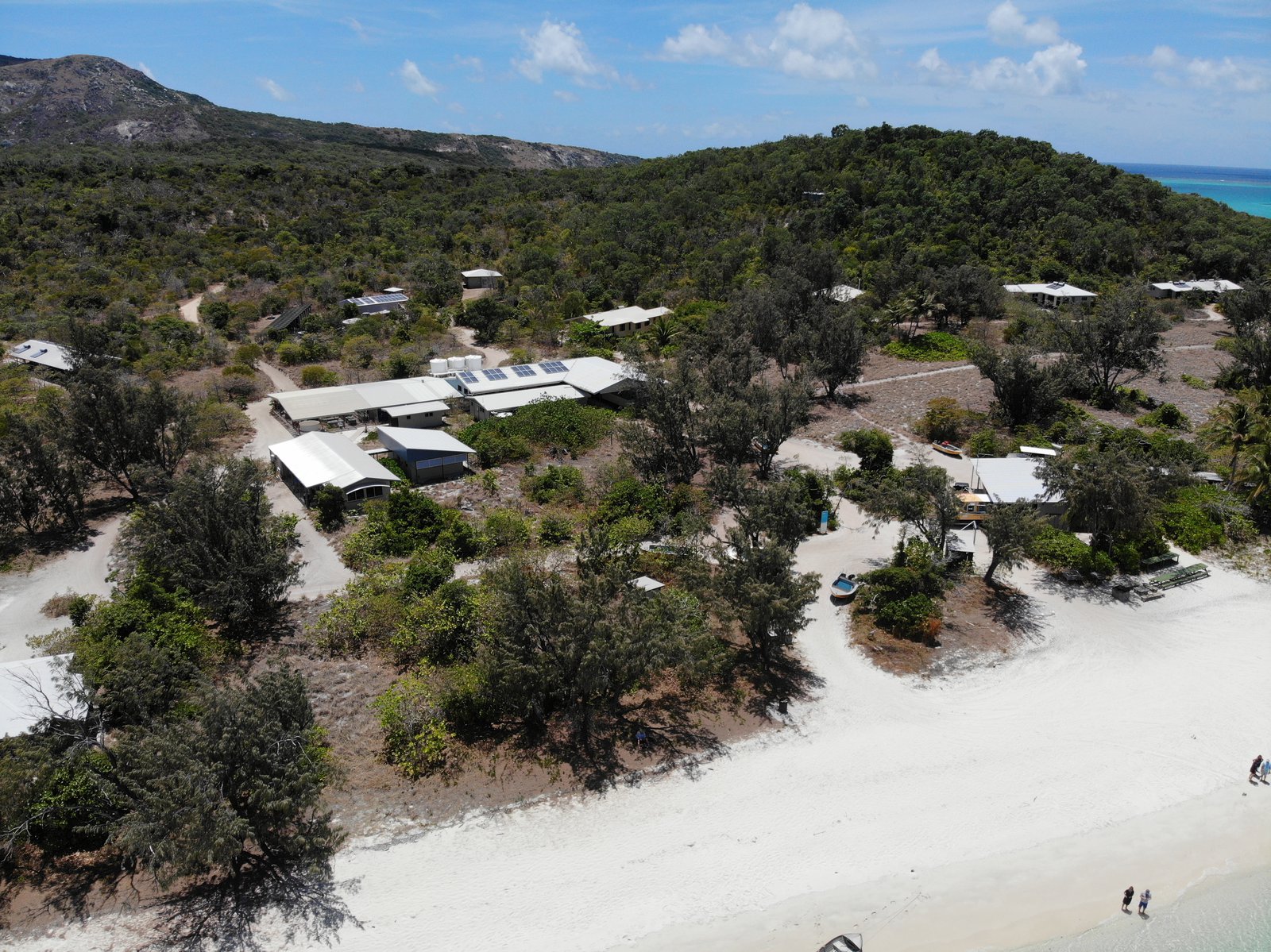Australian Museum undertakes global search for new Co-Directors of Lizard Island Research Station
21 March 2024: Two of the best marine science jobs in the world are now being recruited in Australia. The Australian Museum (AM) the nation’s first museum, is seeking two new Co-Directors to manage its Lizard Island Research Station, located 270kms north of Cairns on the Great Barrier Reef.
Surrounded by the natural beauty of the world’s largest coral reef, the Co-Directors of the AM’s Lizard Island Research Station (LIRS) will live and work sustainably on this island paradise. An initial five-year contract is being offered and the new Co-Directors will be involved in everything from implementing innovative science programs and overseeing research by visiting marine scientists from Australia and around the world, to maintaining infrastructure including boats and research labs, and liaising with tourism operators.

© Charlie Shuetrim
Having recently marked its 50th anniversary, the AM’s LIRS was established in 1973 by former AM Director, Frank Talbot AM. LIRS is the most northerly scientific research station on the Great Barrier Reef and is recognized by researchers as being one of the best equipped and operated in the world. Supported by the AM and the Lizard Island Reef Research Foundation, LIRS has developed into a well-equipped, highly productive, and internationally recognised reef research facility.
The AM is recruiting for the two positions following the forthcoming retirement in December 2024 of Dr Anne Hoggett AM, and Dr Lyle Vail AM, who have been Joint Directors at LIRS for the past 34 years.

© Colin Price
Director and CEO, Australian Museum, Kim McKay AO, said the new Co-Directors will be able to embark on fulfilling careers, tailored to their passions and ambitions in marine science and will have big shoes and flippers to fill following Anne and Lyle’s extraordinary contribution.
“LIRS is a leader in reef science, attracting marine biologists from all over the world to study the reef and the impacts of climate change. The new Co-Directors of LIRS will play an important role in protecting the GBR by integrating scientific and policy expertise to raise awareness of the plight of the reef,” McKay said.
The LIRS joint directorship is an executive position that reports directly to the AM’s Chief Scientist and Director of AMRI, Professor Kris Helgen, who is responsible for implementing the AM’s scientific agenda.
“The new Co-Directors will play an important part in building on the AM’s reputation of scientific excellence, and actively promote LIRS as a leading voice for reef science and protection,” Helgen said.
“Along with a passion for coral reef science, applicants must be resourceful and have demonstrated leadership skills, be able to implement innovative science programs, identify and foster partnerships with key organisations, as well as supervise staff, mentor trainees, and coordinate activities across the research station. For the right candidates, this is a life-changing opportunity,” Helgen added.
Professor Helgen said that the contribution that Dr’s Vail and Hoggett have made to Lizard Island in over 34 years is unmatched and both have been recently celebrated and awarded by the AM for their extraordinary efforts.
The AM website provides the latest information about the status of the search process and the search firm welcomes expressions of interest from potential candidates.
Please email amri@australian.museum for further information and relevant documents on the positions.

© Australian Museum
About the Australian Museum
The Australian Museum (AM) was founded in 1827 and is the nation’s first museum. It is internationally recognised as a natural science and culture institution focused on Australia and the Pacific. As custodian of more than 22 million objects and specimens, the AM is uniquely positioned to provide a greater understanding of the region through its scientific research, exhibitions, and public and education programs. Through the Australian Museum Research Institute (AMRI), the AM also plays a leading role in conserving Australia’s biodiversity through understanding the environmental impacts of climate change, potential bio-security threats and invasive species. Visit Australian Museum for more information.
About Lizard Island Research Station
The Australian Museum owns and operates Lizard Island Research Station (LIRS) to facilitate coral reef research and education on the Great Barrier Reef. Located 270 kms north east of Cairns on the northern end of the Great Barrier Reef, LIRS has been a vital supplier of coral reef research and education for scientists and researchers from around the world since it was founded in 1973 by former Australian Museum Director, Professor Frank Talbot.
LIRS is part of the Australian Museum Research Institute (AMRI), led by Professor Kris Helgen, to facilitate coral reef research and education on the Great Barrier Reef – one of Australia’s greatest natural treasures and a World Heritage Area – and is key to the AM’s commitment to transforming the conversation around climate change. In addition to coral reefs, it has other important marine habitats including extensive areas of mangroves and seagrass beds.The Reef has amazing biodiversity and beauty including approximately 1600 species of fish, more than 350 species of hard corals and 4000 mollusc species.
LIRS provides shared accommodation for up to 37 people in four simple, yet comfortable, self-contained houses. A fleet of boats to enable access to the reefs of the Liard Island Group and to more distant reefs, from the mainland coast to the outer barrier reefs. Diving equipment, including scuba tanks and air filling facilities, a flexible seawater aquarium system enabling controlled experiments with living reef organisms and laboratories with basic equipment.
Download the media release
Media Contact
Claire Vince, Media and Communications Adviser
T 0468 726 910

